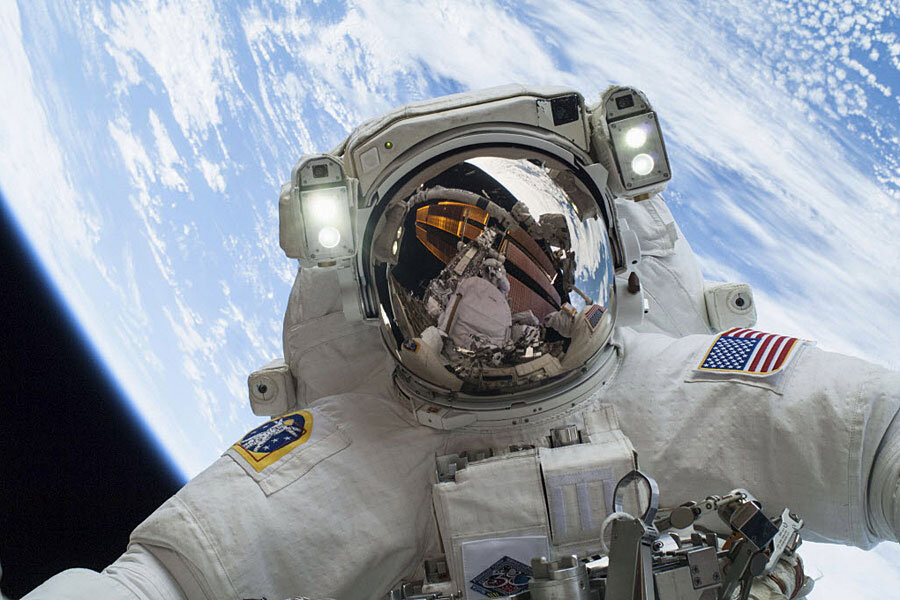Leaking ammonia and glove damage on spacewalk, but astronauts are safe
Loading...
| Cape Canaveral, Fla.
Spacewalking astronauts encountered leaking ammonia and minor glove damage while performing plumbing work outside the International Space Station on Friday, then fell so far behind that they had to leave a radiator job undone.
NASA said neither the leak nor glove snag posed any danger to Kjell Lindgren or Scott Kelly, making their second spacewalk in 1 1/2 weeks.
Lindgren reported intermittent flakes of escaping toxic ammonia early in the spacewalk, while making connections in a cooling line. He assured Mission Control it appeared to be just a small leak.
The astronauts later checked each other's suits for ammonia residue and found none. Such contamination could be hazardous if brought inside. Mission Control assured the pair that any trace of ammonia would have been dissipated by the sun.
Minutes after the ammonia leak, Kelly, NASA's yearlong spaceman, reported that the forefinger of his right glove had a stitch poking out. He said it looked like a loop. Flight controllers in Houston scrambled to make certain the damage was, indeed, slight and superficial; they determined it was.
Although the astronauts got out the hatch early to work on the space station's cooling system, the ammonia leak slowed them down, so much so that Mission Control had them undo their radiator work.
Their main job was to undo jury-rigged repairs made to a leaky cooling line three years ago. The ammonia leak subsequently was fixed another way — by replacing a failed pump — so NASA wanted the radiator system back in its original setup. That meant topping off the ammonia coolant supply and retracting a backup radiator no longer needed.
The ammonia refill went well. So did the radiator retraction. It took Lindgren 50 turns on a pistol-grip tool to fold up the 44-foot-long radiator, accordion style. There was no time to cinch it down, however, so he had to redeploy it a few hours later, his earlier effort wasted.
Leaving the backup radiator fully extended should pose little risk for damage, NASA said.
Friday's spacewalk ended up lasting nearly eight hours, much longer than intended. "You make us proud," Mission Control told the astronauts. "Welcome back," Japanese crewmate Kimiya Yui added from inside.
Their shorter spacewalk on Oct. 28 featured a robot-arm lube job and other mundane maintenance.
Kelly has been at the 250-mile-high outpost since March, and isn't due back until next March. Friday marked his 224th consecutive day in orbit, already a U.S. record. His companion for the long haul is Russian Mikhail Kornienko.
Four other astronauts are on board for the typical six months: Lindgren, Yui and two Russians.
"Going off grid for spacewalk," Kelly said via Twitter before heading out. "I'll be back w you again soon!"
His identical twin, Mark Kelly, a retired astronaut, wished him luck. "Be safe & don't break anything on the @Space_Station!" he said in a tweet.
This was the 190th spacewalk in the station's 17-year history. Astronauts have been on board, continuously, for 15 years.







